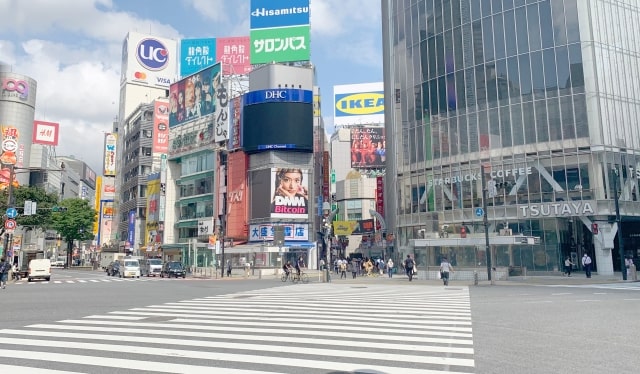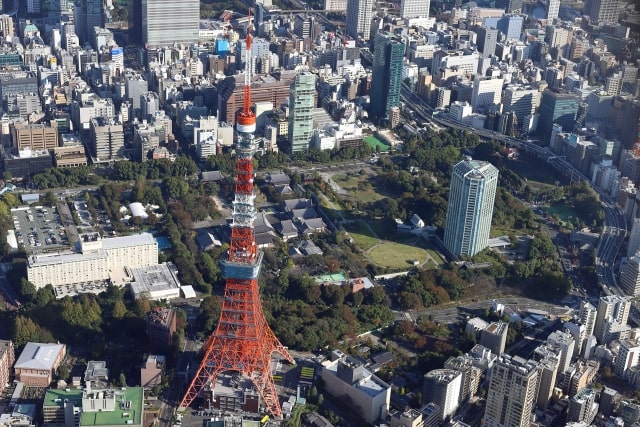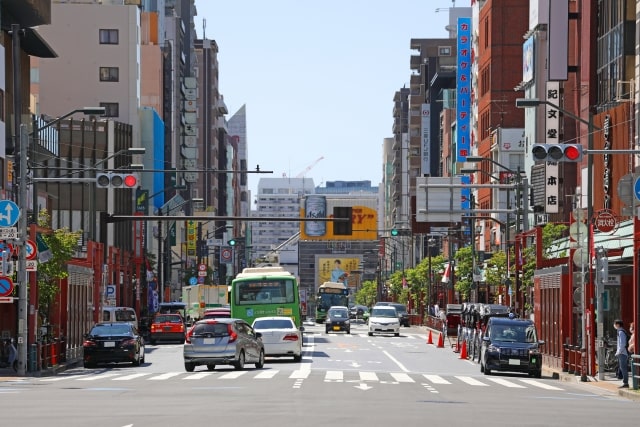Average Monthly Rent in Tokyo by Specific Area
2021-08-10
Town & Local Area Info

Tokyo is one of the most expensive cities in the world to live in, and usually ranks within the top 10 in terms of property rental prices. Yet it is also one of the most populous metropolitan areas in the world, so there are a lot of people renting apartments.
So how much does it cost to rent an apartment in Tokyo? In this article, we will examine the average monthly rent for different types of apartments in every area of Tokyo.
Note that you normally need to have a monthly income of at least 3 times the monthly rent in order for your application to pass through the tenant screening. Keep this in mind when searching for an apartment to rent in Tokyo.
1.Administrative Divisions of Tokyo
Tokyo can be roughly divided into two major areas: the 23 Special Wards, and Western Tokyo. The 23 Special Wards have Japanese names that end in –ku. They are located in the eastern part of Tokyo, and are generally more populous and urbanized areas compared to the rest of Tokyo.
Western Tokyo is comprised of 30 ordinary municipalities (cities and towns). As the name suggests, it is located in the western part of Tokyo, and is generally richer in nature, while functioning as a commuter town for the Special Wards.
Between these two major areas, apartment rentals are more expensive in the 23 Special Wards. This is because most company offices and commercial centers are concentrated in the urban centers of the Special Wards, and there is very high demand for the residential spaces in the area. Some of the areas with the most expensive land prices in Japan are located within the Special Wards, such as Roppongi, Azabu, and Ginza.
In contrast, Western Tokyo has more residential areas with a calm, idyllic atmosphere. In general, the farther away you live from the 23 Special Wards, the cheaper apartment rents will be. However, this also means a longer travel distance to get to the business and commercial centers of Tokyo.

2.Average Monthly Rent in the 23 Special Wards
The following table shows the average monthly rent in each of the 23 Special Wards for different types of apartments.
| Area | Studio Type | 1K/1DK | 1LDK/2K/2DK |
| Chiyoda-ku | ¥106,100 | ¥113,900 | ¥182,000 |
| Chuo-ku | ¥100,700 | ¥104,400 | ¥170,700 |
| Minato-ku | ¥104,100 | ¥119,600 | ¥226,900 |
| Shinjuku-ku | ¥75,200 | ¥88,400 | ¥131,100 |
| Bunkyo-ku | ¥72,800 | ¥82,800 | ¥120,600 |
| Taito-ku | ¥70,200 | ¥86,200 | ¥125,800 |
| Sumida-ku | ¥67,500 | ¥79,700 | ¥103,200 |
| Koto-ku | ¥69,500 | ¥80,500 | ¥94,400 |
| Shinagawa-ku | ¥74,900 | ¥82,200 | ¥125,300 |
| Meguro-ku | ¥76,200 | ¥84,600 | ¥132,200 |
| Ota-ku | ¥66,700 | ¥74,800 | ¥102,600 |
| Setagaya-ku | ¥68,100 | ¥72,200 | ¥112,800 |
| Shibuya-ku | ¥87,500 | ¥97,400 | ¥189,500 |
| Nakano-ku | ¥60,200 | ¥69,500 | ¥103,300 |
| Suginami-ku | ¥61,900 | ¥69,400 | ¥101,100 |
| Toshima-ku | ¥69,700 | ¥74,000 | ¥106,200 |
| Kita-ku | ¥60,000 | ¥70,100 | ¥92,00 |
| Arakawa-ku | ¥64,400 | ¥70,200 | ¥88,500 |
| Itabashi-ku | ¥56,800 | ¥65,000 | ¥83,800 |
| Nerima-ku | ¥55,200 | ¥63,500 | ¥84,900 |
| Adachi-ku | ¥54,800 | ¥61,000 | ¥71,500 |
| Katsushika-ku | ¥53,000 | ¥61,700 | ¥71,900 |
| Edogawa-ku | ¥56,100 | ¥62,500 | ¥77,500 |
Note that these averages do not put into consideration variations due to building age, facilities, and other factors. In general, properties that are newer and located closer to train stations have higher demand, so they will tend to be more expensive than the average.
As you can see, for Chiyoda-ku (where Tokyo Station is location), Chuo-ku, and Minato-ku (where Roppongi is location), even a small single-person apatment can set you back over 100,000 yen a month. Special Wards that have generally cheaper rents are those along the prefectural borders of Tokyo, such as Adachi-ku to the north and Katsushika-ku and Edogawa-ku to the east.
One common gauge used by locals is whether the property lies inside or outside the loop of the JR Yamanote Line. Properties inside the loop tend to be quite expensive, and those outside tend to get cheaper the farther away they are from the loop.

3.Average Monthly Rent in Western Tokyo
The following table shows the average monthly rent in each municipality in Western Tokyo for different types of apartments.
| Area | Studio Type | 1K/1DK | 1LDK/2K/2DK |
| Hachioji-shi | ¥36,800 | ¥39,000 | ¥60,000 |
| Tachikawa-shi | ¥47,400 | ¥48,100 | ¥66,900 |
| Musashino-shi | ¥57,600 | ¥63,400 | ¥102,100 |
| Mitaka-shi | ¥56,100 | ¥64,200 | ¥87,600 |
| Ome-shi | ¥29,300 | ¥35,600 | ¥51,700 |
| Fuchu-shi | ¥44,200 | ¥49,000 | ¥74,700 |
| Akishima-shi | ¥40,800 | ¥38,500 | ¥57,500 |
| Chofu-shi | ¥50,100 | ¥58,700 | ¥81,000 |
| Machida-shi | ¥42,800 | ¥42,100 | ¥61,000 |
| Koganei-shi | ¥49,100 | ¥53,400 | ¥81,000 |
| Kodaira-shi | ¥39,600 | ¥41,900 | ¥64,600 |
| Hino-shi | ¥36,500 | ¥42,700 | ¥63,800 |
| Higashimurayama-shi | ¥39,700 | ¥44,000 | ¥62,100 |
| Kokubunji-shi | ¥46,400 | ¥50,900 | ¥69,900 |
| Kunitachi-shi | ¥48,900 | ¥47,400 | ¥71,800 |
| Fussa-shi | ¥34,100 | ¥39,100 | ¥57,100 |
| Komae-shi | ¥49,700 | ¥54,900 | ¥84,100 |
| Higashiyamato-shi | ¥33,400 | ¥41,500 | ¥53,900 |
| Kiyose-shi | ¥41,500 | ¥41,600 | ¥60,700 |
| Higashikurume-shi | ¥53,700 | ¥42,600 | ¥57,000 |
| Musashimurayama-shi | ¥36,200 | ¥37,800 | ¥53,000 |
| Tama-shi | ¥40,500 | ¥42,500 | ¥60,700 |
| Inagi-shi | ¥42,600 | ¥43,600 | ¥63,000 |
| Hamura-shi | ¥34,100 | ¥36,800 | ¥55,800 |
| Akiruno-shi | ¥42,600 | ¥36,400 | ¥50,400 |
| Nishitokyo-shi | ¥43,500 | ¥52,800 | ¥72,200 |
| Mizuho-machi | ¥33,000 | ¥36,400 | ¥47,600 |
| Hinode-machi | – | ¥40,000 | ¥60,500 |
As you can see, monthly rents in Western Tokyo are generally much cheaper compared to those in the 23 Special Wards. Municipalities that are situated close to the Special Wards, or have convenient transportation access (e.g. there is a station that is served by several lines or is a stop on an express train) tend to have more expensive rents.
Once again, these averages do not put into consideration variations due to building age, facilities, and other factors. In general, properties that are newer and located closer to train stations have higher demand, so they will tend to be more expensive than the average.
4.Summary
Different parts of Tokyo can have vastly different monthly rents. Between the most expensive Chiyoda-ku and the least expensive Ome-shi, the rent for a similar type of apartment can differ by as much as 70,000 yen on average. Of course, each area has its own advantages and disadvantages. Ome-shi is small city with a quiet atmosphere away from central Tokyo, while Chiyoda-ku is a big business and commercial district that may be convenient but can also be cramped and stressful.
You can use this article as a reference when searching for a property in Tokyo. Keep in mind that you normally need to have a monthly income of at least 3 times the monthly rent to pass the tenant screening, and that you need to prepare around 5 to 6 times the monthly rent to pay for the upfront costs.

